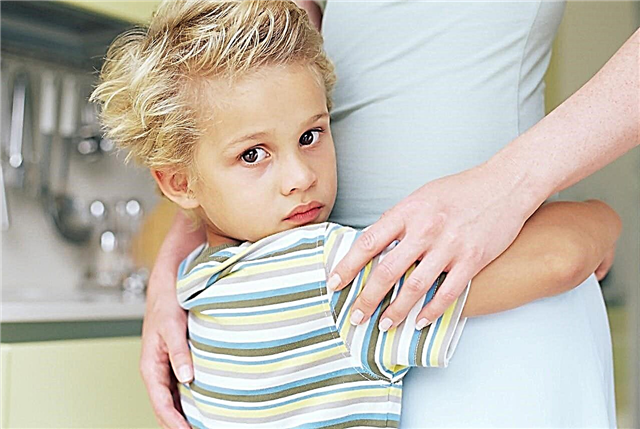
Xylometazoline drugs, such as Xymelin, are often used in the treatment of rhinitis in adults. But is it possible to drip it into the nose of children, how does the child's body react to this medicine and in what doses is it recommended for young patients?


Release form and composition
The medication is released in two forms - drops and spray, but each of them is represented by a transparent liquid without color. The volume of the bottle is 10 or 15 ml. The main ingredient of the drug is xylometazoline hydrochloride. Its amount in 1 ml is 500 μg in 0.05% drug, and in a preparation with a concentration of 0.1% - 1 mg. Additionally, the solution includes benzalkonium, disodium edetate and other compounds.


There is also a drug Xymelin Eco. It is presented as a nasal spray in two dosages (0.05% and 0.1%) and differs from the usual Xymelin in a different composition of auxiliary ingredients. Among them there is no benzalkonium chloride (preservative), which reduces the risk of an allergic reaction to the medication.
Issued separately Xymelin Eco with menthol. In this spray, xylometazoline is contained in a concentration of 0.1% and is supplemented with eucalyptol and levomenthol, which give the liquid an odor, opacity and slight color.
In addition, in pharmacies you can find the drug Xymelin Extra. In this spray, unlike other types, Xymelin, there are two active ingredients. One of them is xylometazoline at a dose of 500 μg / 1 ml, and the second is ipratropium bromide, which contains 600 μg in 1 ml of solution. In the treatment of children under 18 years of age, this medication is not used.

Operating principle
Any form of Xymelin acts locally in the nasal mucosa, causing vasoconstriction. The result of this influence will be the elimination of redness and puffiness, thereby reducing the volume of nasal discharge and making breathing easier. The medication begins to act very quickly (literally in a few minutes) and constricts the vessels for a period of up to 10-12 hours. Its active compound practically does not enter the bloodstream.
Indications
Xymelin is used for acute respiratory infections, if rhinitis is one of the manifestations of the disease. In addition, the drug is prescribed for children:
- with acute allergic rhinitis;
- with sinusitis;
- with hay fever;
- with otitis media;
- with eustachite.
Such a remedy is also used for any medical manipulations in the nasopharynx, for example, with rhinoscopy. The same indications are noted in the instructions for Eco and Eco drugs with menthol.


From what age is it allowed to take?
- Xymelin is not assigned to babies under the age of two. Children over 2 years old can only drip or inject medication with a concentration of 0.05%.
- Spray and drops of Xymelin containing xylometazoline at a concentration of 0.1% are allowed only from the age of six.
- Xymelin Eco is also contraindicated in children under 2 years of age. For the treatment of small patients aged 2-10 years, a 0.05% drug is used, and a drug with a concentration of 0.1% is prescribed for children over 10 years old.
- As for the medicine with menthol, such Xymelin is prescribed from the age of 10.

Contraindications
The drug should not be used in children with:
- Intolerance to any ingredient in the solution.
- Increased blood pressure.
- Hyperthyroidism.
- Tachycardia.
- Glaucoma.
- Rhinitis in atrophic form.
- Postponed surgery on the membranes of the brain.
When diagnosing diabetes mellitus in a small patient, Xymelin treatment requires increased caution.

Side effects
The introduction of Xymelin into the nose can cause a local reaction in the form of itching, tingling, dryness, burning, or other symptom. Most often, it is due to excessively frequent use of the medication or too long treatment. Systemic reactions in the form of headaches, insomnia, tachycardia and other symptoms occur extremely rarely during Xymelin therapy.


Instructions for use
Xymelin should be injected into the nose no more than three times a day, and the course of treatment with such a vasoconstrictor should not exceed one week.
If, after 7 days of therapy, the symptoms have not disappeared, you should contact your pediatrician or ENT.
- Children from 2 to 6 years old the drug with a concentration of 0.05% is prescribed once a day or twice a day. If drops are used, then one or two drops are dripped into each nasal passage. The application of the spray involves one spray in each nostril.
- 6 year olds and older instill / inject 0.1% medication. When using a spray, a single dosage will be 1 injection. When using drops, 2 drops are instilled into each nasal passage of the child, but sometimes the doctor prescribes 3 drops. The tool is often used only once per day, but with a severe cold, repeated injection or instillation is required.
- If the child is assigned Xymelin Eco, then such a drug is injected into each nostril of a small patient, one injection 1-3 times a day. For children under 10 years old, 0.05% medicine is used, for ten-year-old patients and older - 0.1% spray. The duration of treatment with this Xymelin option should not exceed 10 days.
- When used in the treatment of the common cold Ximelina Eco with menthol the child is injected with the medicine 1 to 3 times a day, performing one press on the dosing device, inserting it alternately into each nostril of the patient. The drug is prescribed for up to 10 days.

Overdose
The child's body reacts to an exceeded dose of Xymelin with an increase in heart rate, headaches, vomiting, sleep disturbances, arrhythmias and other symptoms. If the dosage is too high, the blood pressure of the small patient decreases, the heart rate slows down. In such a situation, you should immediately seek medical help.
Interaction with other drugs
Xymelin can be used in conjunction with many medicines, with the exception of tricyclic antidepressants and MAO inhibitors.


Terms of sale
All forms of Xymelin and Xymelin Eco are over-the-counter medicines, so they can be freely purchased at any pharmacy. The price of a bottle of drops ranges from 70 to 90 rubles, and 10 ml of spray is about 160 rubles. A bottle of Xymelin Eco spray costs an average of 170-180 rubles.
Storage conditions
Storing any Xymelin at home requires a dry place out of the reach of children. The drugs should be stored at room temperature (no higher than 25-30 degrees Celsius). The shelf life of Xymelin drops and spray is 2 years, Xymelin Eco - 3 years, and Eco with menthol - 2 years 6 months.
Reviews
Most of the reviews on the treatment of children with Xymelin are positive. Moms call such a remedy effective and efficient. They note that the drug very quickly removes nasal congestion and other symptoms of the common cold, and its effect lasts about 10 hours.
At the same time, they often acquire a spray for children, since it is more convenient to use this form. Despite the higher cost, Xymelin Eco is in the greatest demand, as it does not contain preservatives and rarely causes side effects.
When using drops, some young patients experience allergies and other negative reactions.
Read more about the effect of Xymelin on the mucous membrane of a child in the video below.
Analogs
Instead of Xymelin, the doctor may prescribe another remedy with the same active ingredient, for example, Otrivin, Galazolin, Xylometazoline, Zvezdochka NOZ, Tizin, Rinostop, Snoop, Dlinos, Farmazolin or Xilen. These drugs, like Xymelin, are spray and nasal drops, and some also have a nasal gel form.
With a runny nose, depending on its cause, the child may be prescribed seawater preparations, antihistamines, topical antibiotics, interferon preparations and many other medications.




